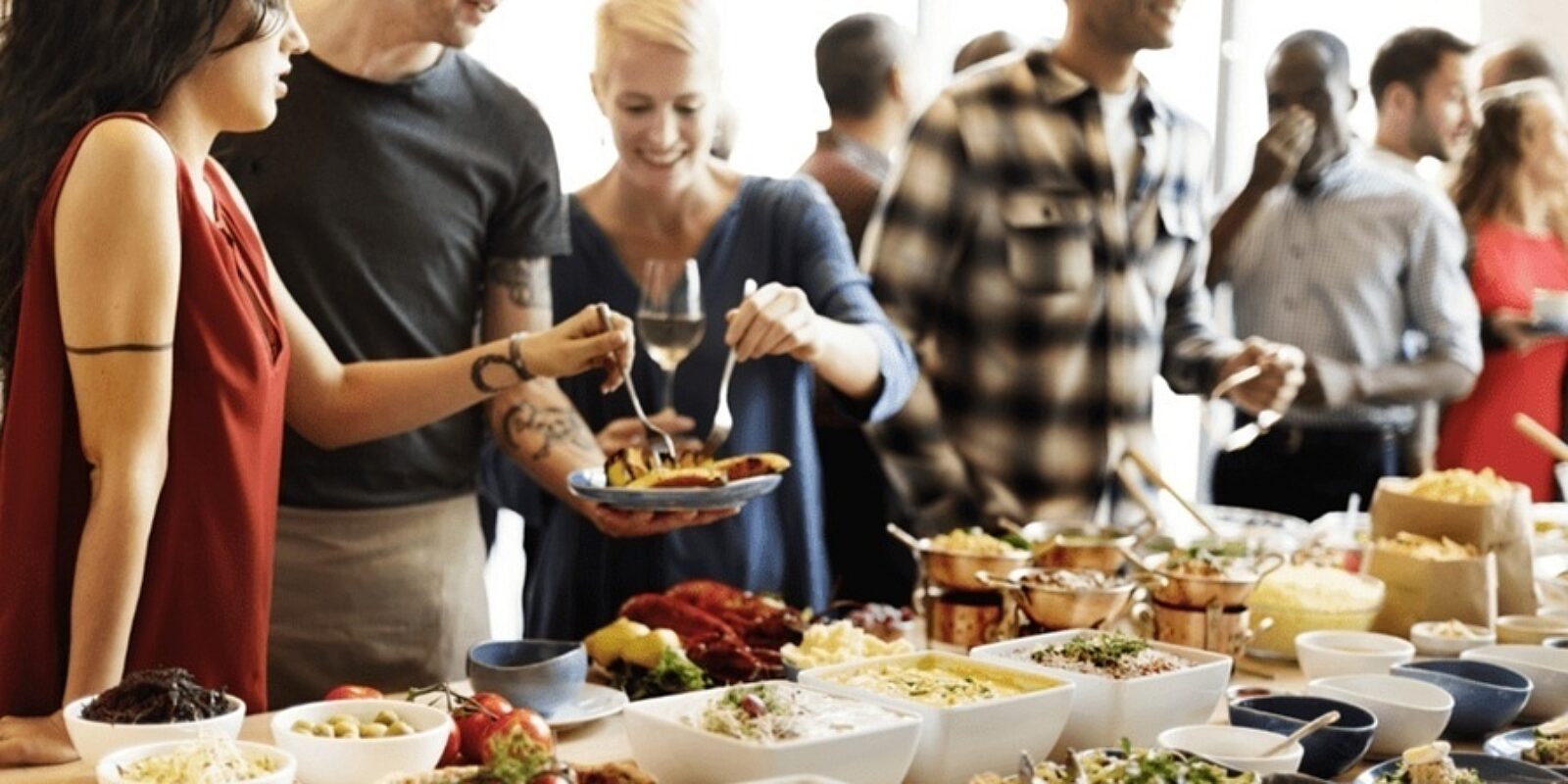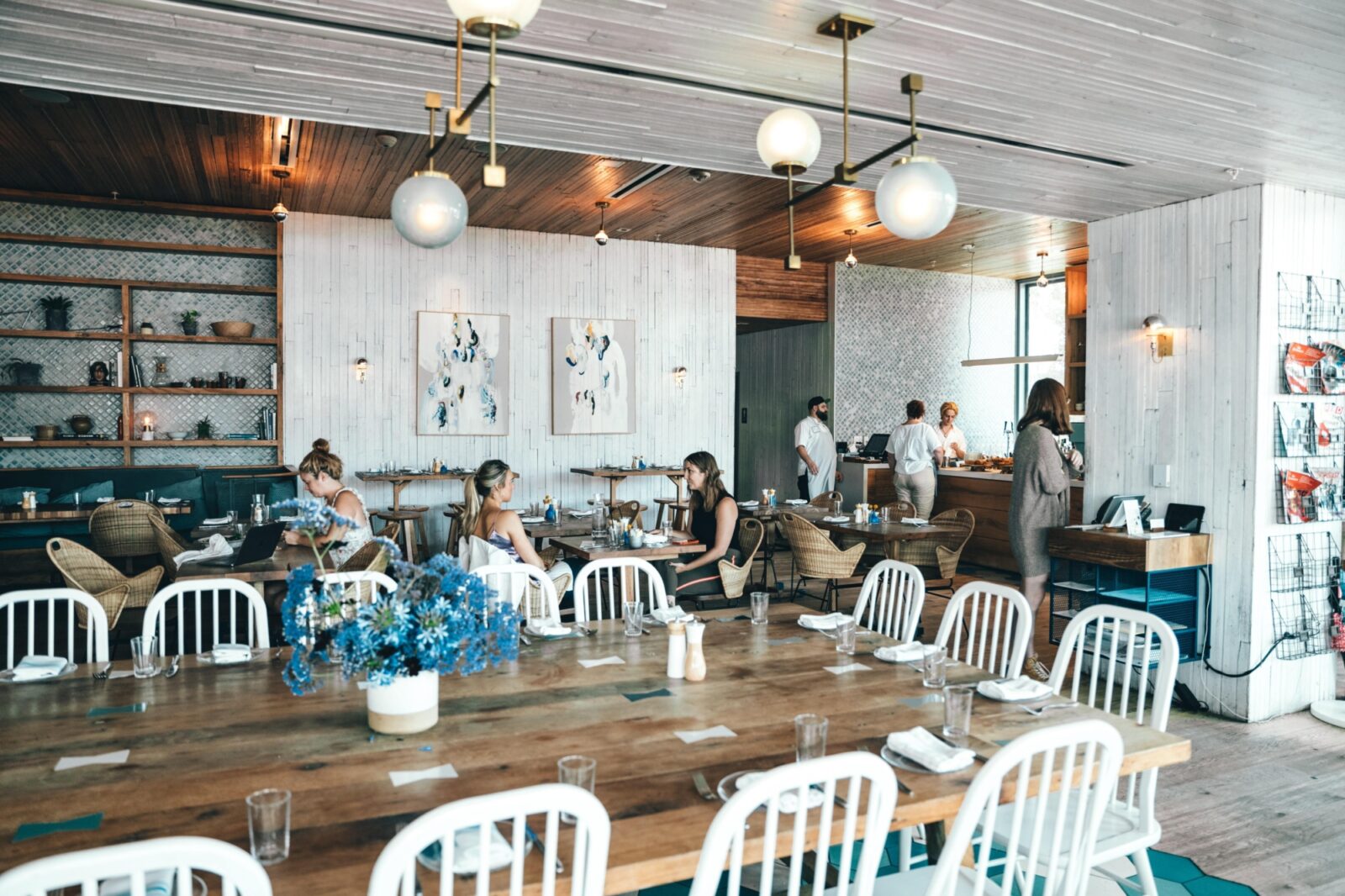
How To Price a Menu for Restaurant Events
Pricing menus for events requires balance and an effective strategy: your event menu should account for spend in other areas of the business, be reasonable for your guests, and be competitive with other venues. Here's how to do that well.

Taylor KellyAuthor
Is your restaurant already hosting or catering internal and external events? If not, now is the right time to start: according to MarketResearch.com, the global contract catering market is expected to grow at a compound annual growth rate (CAGR) of 4% from 2016-2021.
Hosting an event or function at your restaurant can be both exciting and scary; you’re used to the hustle and bustle of a busy dining room, keeping up with tables turns, and making sure those fragile glasses of wine don’t spill, but hosting an event is an entirely different animal than a regular night of dinner business.
If a regular night was a lion, an event would be a starfish. But it's worth getting to know these starfish, because events are an incredibly effective part of a restaurant marketing strategy.
When it comes to a private event or catered function, some intrinsic parts of your restaurant’s operations are turned on their head, the biggest of those being your menu.
Typically, events have a set, customized menu featuring items the customer chooses. So, how do you go about pricing a menu for events in your restaurant?
Menu Engineering Course
Take this course to make the most of your menu. Learn about menu psychology and design, managing your menu online, and adapting your menu to increase sales.

The Science Behind Menu Pricing
A menu pricing strategy is essential in order to keep margins at a reasonable level so you can enjoy profit. I mean, we all want to make money, am I right?
But, where to begin?
A good place to start is by calculating your food cost percentage (FCP). This equation is pretty simple:
How much the ingredients cost ÷ How much you sell the dish for = Food Cost Percentage
The general rule of thumb is to keep your FCP around 28-35%, but ultimately, your goal is find the sweet spot between keeping the percentage as low as possible without sacrificing quality.
Let’s look at an example. If you sell a chicken dinner with green beans and mashed potatoes for 23 dollars and the ingredients cost you seven dollars, your food cost percentage will be:
$7.00 ÷ $23.00 = 30.4%
For this dish, you’re right in the sweet spot – good job!
Make sure you’re going through this exercise with each menu item – both on your regular meal-service menu and your special event menu – not just the newly added dishes. You can even do this calculation for your menu as a whole: add together all menu item costs as well as your revenue to get the FCP for your entire menu.
When you find the FCP of a certain dish is too high, consider using less expensive ingredients or adjust your price accordingly, but keep in mind what your customers will be willing to pay for it.
Although it may seem like a 30-35% FCP is high, remember that your menu items need to be priced to not only account for food costs, but other general operational costs as well, like rent, bills, and the labor (because those meals aren’t going to plate themselves!).
Of course, you should also consider your restaurant’s gross profit margin. With this calculation, you’ll want to factor in labor, rent, and other outlying costs. Typically, the gross profit margin for a restaurant can range between 0-15%. Full-service restaurants typically see a GPM of 3-5%.
Menu Pricing for Events
As we mentioned, pricing menus for events is a different beast entirely.
Here are four tips to remember when pricing your menu for restaurant events.
1) Determine Fixed Pricing Calculations
Typically, events are hosted for a specified amount of people with a pre-determined menu. More often than not, there is a pre-fixe menu with a cost per head. This strategy is what is known as fixed pricing.
Here's an example of the fixed pricing method in action: a buffet style event may offer guests three or four appetizers, three selections for entrees, one salad, and two desserts.
In this situation, it’s wise to use the Food Cost Percentage to ensure your menu is priced to account for other areas of the business: calculate how much all of the food will cost and divide that by the cost you plan to charge per person.
Let’s say the food ingredients for a buffet-style bridal shower will cost you a total of $750. There are 50 guests in attendance and you plan to charge $35 per guest.
$35 x 50 = $1,750
$750/$1,750 = 42%
Your FCP is still pretty high. Try bumping the cost up to $40 per person and recalculate:
$40 x 50 = $2,000
$750/$2,000 = 37%
Raising the amount you’re charging per person by $5 lowers your FCP by 5%, a solid improvement. If you’re trying to reach that 28-35% mark, maybe you can find a different supplier for some ingredients and drop your food cost to $700.
$40 x 50 = $2,000
$700/$2,000 = 35%
When it comes to event menu pricing, it’s all about strategy. You'll find yourself working the numbers to make sure you’re not selling yourself short, while also striving to be fair to your customers in order to win their business and (hopefully) lock them in as a loyal patron.
Speaking of which, this gives me a perfect segue to discuss something you should avoid when pricing menus for events...
2) Don't Be Unreasonable
As a business owner, your goal is to make money; as a hospitality professional, it's your goal to delight your guests with exceptional hospitality, memorable dining experiences, and build lasting relationships to drive customer loyalty.
Be reasonable about what you plan on charging event guests: don’t drive your charge per person way up just to see higher profits for yourself.
This menu pricing strategy is bad for business and might make you lose the deal altogether. Remember that when people are scouting out venues for events, they’re most likely looking at multiple options.
Quick Tip: Before you decide on how much you’re going to charge for an event, do some research on the competition. Find out how much other restaurants or catering services are charging so you can make sure you’re not priced out of the market. Competitive pricing will help win more business.
Don’t knock yourself out of the running by being unreasonable with your event menu pricing.
3) Mix Up the Menu
When giving a customer options for building an event menu, do so strategically.
You don’t want to give them only steak, lobster, and caviar options because of course, these are expensive options to source! Offer an assortment of high cost and low cost items to ensure you’re not losing out on too much profit and you’re still giving your guests enough impressive options.
It’s also wise to evaluate your event menu under a cost savings lense that looks to consolidate and maximize inventory.
Food waste is a hot topic these days both for the sizable impact it has on the environment and on a restaurant's bottom line.
For example, if you’re offering event guests a lemon fish dish, incorporate the lemon into a side of rice. Spinach that may accompany your chicken dish can be used raw in a salad.
This consolidation strategy helps to keep food costs down with regard to your restaurant's regular meal service; you can buy items in bulk at discounted rates.
4) Consider Tiered Pricing Calculations
Fixed pricing isn’t the only option for pricing out events – a tiered pricing structure is another great option to lean on.
With tiered pricing, there is a fixed cost per person that lowers with the more guests you have. So, if a party is between zero and 50 guests, the cost per person may be $45. But, if the guest list were to grow to between 50 and 75 guests, you can drop the price to $40 a head.
Tiered pricing is a great option for events because it plays on consumer preference for "more for less" – more friends in the same place for a lower cost. It likewise promotes hospitality and shows prospective guests you believe in the old "the more the merrier" adage.
Again, you’ll have to run the numbers to see what specific price point makes sense for your restaurant and your guests' wallets.
If you’re including other fees, like a cake-cutting fee or set up charge, make sure you factor those into the pricing structure as well and outline them in your contract.
The Price Is Right
As a restaurant, incorporating private events, functions, and even catering service into your restaurant operations can be great ways to increase business and profit.
Although hosting an event is quite different than running a restaurant on a typical weeknight, it has its benefits.
But, when venturing into the world events, you have to make sure you’re going to see a profit; pricing your menu strategically is essential in order to successfully host or cater events.
Related Menu Ideas
Is this article helpful?
DISCLAIMER: This information is provided for general informational purposes only, and publication does not constitute an endorsement. Toast does not warrant the accuracy or completeness of any information, text, graphics, links, or other items contained within this content. Toast does not guarantee you will achieve any specific results if you follow any advice herein. It may be advisable for you to consult with a professional such as a lawyer, accountant, or business advisor for advice specific to your situation.
Read More
Subscribe to On the Line
Sign up to get industry intel, advice, tools, and honest takes from real people tackling their restaurants’ greatest challenges.


